Green Point | |
|---|---|
Suburb of Cape Town | |
 An aerial view of Green Point from Signal Hill | |
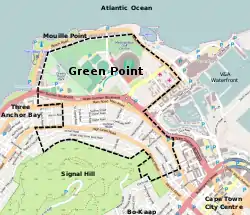 Street map of Green Point | |
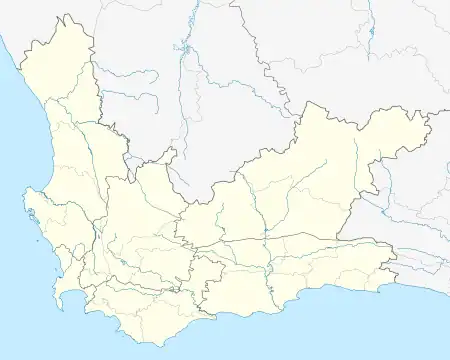 Green Point 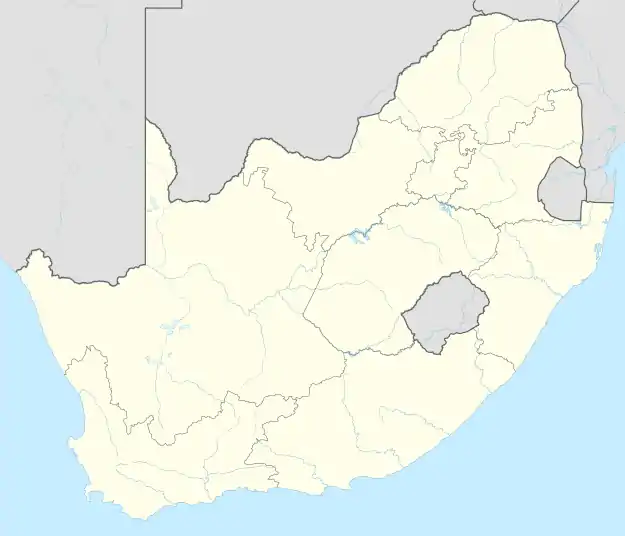 Green Point | |
| Coordinates: 33°54′S 18°24′E / 33.900°S 18.400°E | |
| Country | South Africa |
| Province | Western Cape |
| Municipality | City of Cape Town |
| Main Place | Cape Town |
| Area | |
| • Total | 2.01 km2 (0.78 sq mi) |
| Population (2011)[1] | |
| • Total | 5,362 |
| • Density | 2,700/km2 (6,900/sq mi) |
| Racial makeup (2011) | |
| • Black African | 23.3% |
| • Coloured | 10.9% |
| • Indian/Asian | 2.2% |
| • White | 60.9% |
| • Other | 2.8% |
| First languages (2011) | |
| • English | 67.6% |
| • Afrikaans | 15.2% |
| • Xhosa | 3.2% |
| • Zulu | 1.2% |
| • Other | 12.8% |
| Time zone | UTC+2 (SAST) |
| Postal code (street) | 8051 |
| PO box | 8005 |
| Area code | 021 |
Green Point (Afrikaans: Groenpunt) is an affluent suburb on the Atlantic Seaboard of Cape Town, South Africa located to the north west of the central business district and. It is home to Cape Town Stadium, a major sporting venue that was built for the 2010 FIFA World Cup. Sea Point promenade runs through the suburb, connecting it to Three Anchor Bay and Sea Point, a popular Jewish neighbourhood. Somerset Road forms the main thoroughfare lined by restaurants, cafés, delis, boutiques and nightclubs.
History
The area was originally a flat coastal plain to the fore of Signal Hill and included several dunes. Earlier maps also describe the area as the site of a “hottentot village”. The inhabitants are believed to have been descendants of the Khoisan and they would have farmed on Green Point Common before the arrival of European settlers. The Common became a grazing area for the Dutch East India Company and the area was then known as “Waterplaats” (waterfront) by Dutch settlers. The Dutch made an unsuccessful attempt to construct a mole into Table Bay to protect the anchorage. This was funded through tax levies and the work was completed by slaves, convicts and employees of the Dutch East India Company. However, the mole was battered and destroyed by Atlantic Sea storms.[2]
In response to the arrival of a British fleet in Simonstown, the Dutch built an artillery battery on a hill in the suburb. Following the British conquest of the Cape Colony in 1795, the city expanded towards Green Point owing to the development of the harbour and increases in both commerce and population.[2] Horse racing flourished under the British, becoming a popular past time on the Common, with the African Turf Club established in 1797.[2] In 1859, Cape Governor, Sir George Grey lay the foundation stone for Somerset Hospital, which opened in the area in 1864. It is now a provincial heritage site.[3] In 1889, a railway line ran through Green Point that connected Cape Town and Sea Point. The privately-owned railway came under the control of Cape Government Railways in 1905. The line was eventually closed and the tracks were raised in 1929.[2]
During the Second Boer War, the Common was home to temporary bungalows that housed British and colonial troops. The area of the Common used for horse racing was filled with tents to house Boer prisoners of war that were to be deported to Saint Helena, Bermuda and Ceylon.[2] During apartheid, Green Point was designated as a “whites-only” area as part of the Group Areas Act.[4] Steve Bloom, a photographer known for his portraits of apartheid, lived locally in the 1970s and captured life under apartheid in the suburb.[5] However, pockets of non-white residents lived in the suburb during this period. In the 1980s it was known as a “grey area”, a term used for racially-mixed residential neighbourhoods during apartheid.[6]
Cape Town Stadium opened in 2010 in time for the 2010 FIFA World Cup, it largely replaced the previous Green Point Stadium.[7] Green Point Common, also known as Green Point Urban Park & Biodiversity Garden is today a focal attraction in the area and has an indigenous garden with local vegetation species.[8] Since 2017, Helen Bowden Nurses' Home in Green Point has been a flashpoint for the Reclaim The City movement and debates over affordable housing in the area.[9]
Transportation
The suburb is served by the MyCiTi bus rapid transit system. The 108 and 109 lines take passengers to Hout Bay, Sea Point, V&A Waterfront and Adderley Street in downtown Cape Town. [10]
Houses of worship
- Temple Israel, a Reform Jewish congregation on Upper Portswood Road, affiliated with the South African Union for Progressive Judaism
- The Marais Road Shul, formally known as the Green & Sea Point Hebrew Congregation, an Orthodox Jewish congregation on Marais Road, Sea Point that also serves the Green Point community. In 1994 it had the largest Jewish congregation in the Southern Hemisphere.[11]
- Sacred Heart, a Catholic church on Somerset Road & Napier Street
- St Margaret Mary, a Catholic church on Cheviot Place Road
Education
- Reddam House, an independent school serving pupils age 1 through to Grade 12 on Cavalcade Road
Green Point families are also served by nearby schools in Sea Point and Three Anchor Bay;
- Herzlia Weizmann Primary, an independent Jewish primary school in Sea Point
- Cape Town French School, a French international school, with a primary school campus in Sea Point
- Ellerton Primary School, a public primary school in Three Anchor Bay
- Sea Point High School, a co-educational public high school in Sea Point
Gallery
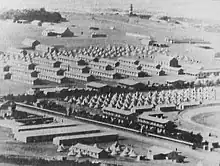 Green Point Common used as prisoner of war transit camp for Boer prisoners during the Second Boer War
Green Point Common used as prisoner of war transit camp for Boer prisoners during the Second Boer War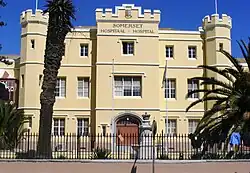 Somerset Hospital built in 1864
Somerset Hospital built in 1864 Pond in Green Point Park with Signal Hill and Lion's Head in the background.
Pond in Green Point Park with Signal Hill and Lion's Head in the background. Stepping stone bridge in Green Point Park.
Stepping stone bridge in Green Point Park. Pond in Green Point Park.
Pond in Green Point Park.
See also
References
- 1 2 3 4 "Sub Place Green Point". Census 2011.
- 1 2 3 4 5 A DESKTOP SPECIALIST ARCHAEOLOGICAL STUDY OF THE REMAINDER ERF 1056 GREEN POINT: CAPE TOWN STADIUM AND GRANGER BAY PRECINCT SAHRA. April 2014
- ↑ "New Somerset Hospital". University of Cape Town. Retrieved 21 May 2018.
- ↑ Timeline of the Group Areas Act and Selected Related Pieces Legislation South African History Online. Accessed on 13 September 2023
- ↑ ‘Pictures like this meant I couldn’t return to South Africa until apartheid was abolished’: Steve Bloom’s best shot The Guardian. 16 February 2023
- ↑ A backstreet that’s shedding its skin Vrye Weekblad. 8 September 2023
- ↑ Perfect pitch: Cape Town's Green Point stadium The Guardian. 31 May 2020
- ↑ The alternative city guide to Cape Town, South Africa The Guardian. 18 February 2016
- ↑ 'End spatial apartheid': why housing activists are occupying Cape Town The Guardian. 25 May 2017
- ↑ MyCiTi System Map Accessed on 12.9.2023
- ↑ Mandela Visits Cape Town Shul and Reassures Jews on Their Future Jewish Telegraphic Agency. 10 May 1994